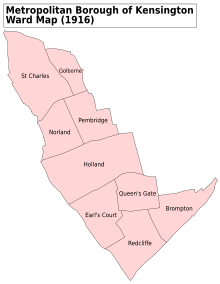
Hammersmith was a parliamentary constituency in the House of Commons of the UK Parliament represented from 2010 until its abolition for the 2024 general election by Andy Slaughter, a member of the Labour Party.

Chelsea was a borough constituency, represented in the House of Commons of the Parliament of the United Kingdom.

Fulham was a borough constituency centred on the London district of Fulham. It was represented in the House of Commons of the Parliament of the United Kingdom from 1885 until 1918 and from 1955 to 1997.
Luton was a constituency including the town of Luton in Bedfordshire. It returned one Member of Parliament (MP) to the House of Commons of the UK Parliament from 1885 to 1974, elected by the first past the post system.
Birmingham Central is a former parliamentary constituency in the city of Birmingham, England. It returned one Member of Parliament (MP) to the House of Commons of the Parliament of the United Kingdom, elected by the first-past-the-post voting system.
Birmingham East was a parliamentary constituency in the city of Birmingham, England. It returned one Member of Parliament (MP) to the House of Commons of the Parliament of the United Kingdom, elected by the first-past-the-post voting system.
Birmingham North was a parliamentary constituency in the city of Birmingham, England. It returned one Member of Parliament (MP) to the House of Commons of the Parliament of the United Kingdom, elected by the first-past-the-post voting system.

Wirral was a county constituency which returned one Member of Parliament (MP) to the House of Commons of the Parliament of the United Kingdom from 1885 to 1983, elected by the first past the post voting system.

Islington East was a constituency which returned one Member of Parliament (MP) to the House of Commons of the Parliament of the United Kingdom from 1885, until it was abolished for the February 1974 general election.

Clapham was a borough constituency in South London which returned one Member of Parliament (MP) to the House of Commons of the UK Parliament. It was created in time for the 1885 general election then altered in periodic national boundary reviews, principally in 1918, and abolished before the February 1974 general election. In its early years the seat was officially named Battersea and Clapham Parliamentary Borough: No. 2—The Clapham Division.

Peckham is a borough constituency in South London which returns one Member of Parliament (MP) to the House of Commons of the Parliament of the United Kingdom. Elections are held using the first-past-the-post voting system.

Salford South was a parliamentary constituency in the City of Salford in Greater Manchester from 1885 until 1950. It returned one Member of Parliament (MP) to the House of Commons of the Parliament of the United Kingdom.

Norwood was a parliamentary constituency in south London which returned one Member of Parliament (MP) to the House of Commons of the Parliament of the United Kingdom by the first past the post system.

Hackney Central was a borough constituency in what was then the Metropolitan Borough of Hackney, in London. It returned one Member of Parliament (MP) to the House of Commons of the Parliament of the United Kingdom.

Hampstead was a borough constituency, centered on the Hampstead area of North London. It returned one Member of Parliament (MP) to the House of Commons of the Parliament of the United Kingdom, who was elected using the first-past-the-post voting system.

Deptford was a parliamentary constituency centred on the Deptford district of South London. It returned one Member of Parliament (MP) to the House of Commons of the Parliament of the United Kingdom.
Kensington North was a parliamentary constituency centred on the Kensington district of west London. It returned one Member of Parliament (MP) to the House of Commons of the Parliament of the United Kingdom.
Birmingham Bordesley was a borough constituency in the city of Birmingham, which returned one Member of Parliament (MP) to the House of Commons of the Parliament of the United Kingdom. Elections were held using the first-past-the-post voting system.

Lewisham was a borough constituency in the Lewisham district of London. It returned one Member of Parliament (MP) to the House of Commons of the Parliament of the United Kingdom, elected by the first past the post system.

Marylebone West was a borough constituency located in the Metropolitan Borough of St Marylebone, in London. It returned one Member of Parliament (MP) to the House of Commons of the Parliament of the United Kingdom, elected by the first past the post voting system.

















